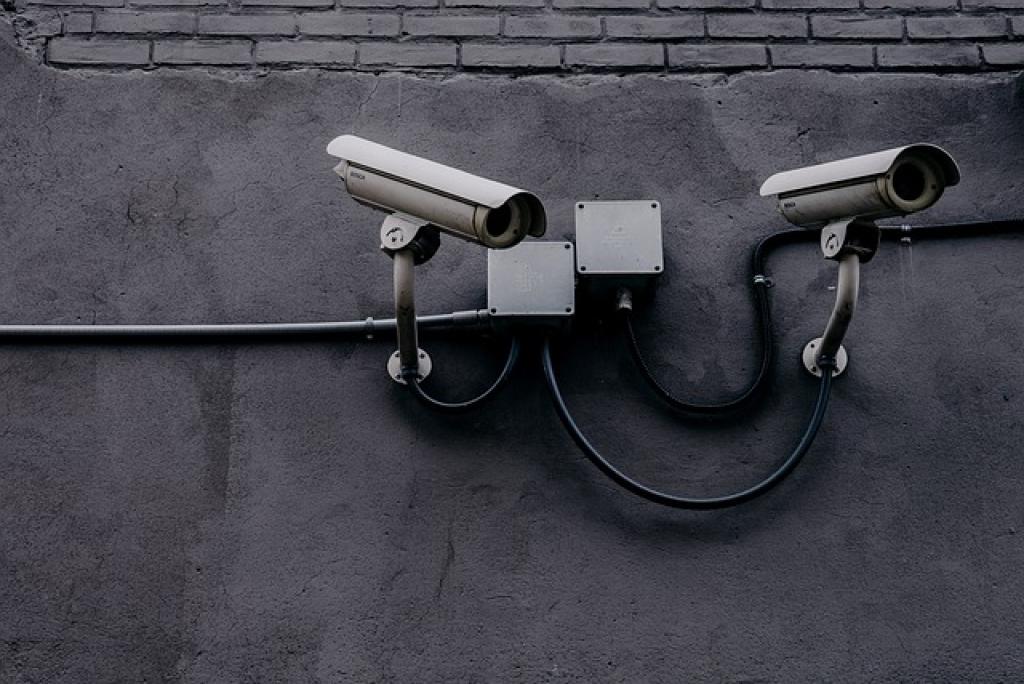
The Importance of Front Desk Security in Office Buildings
In today’s fast-paced world, office buildings are bustling with activity, serving as the beating heart of countless businesses. With so many employees, clients, and visitors passing through daily, maintaining a secure environment is essential. At the forefront of this task is front desk security, the gatekeeper ensuring that only the right people gain access.
Front desk security isn’t just about managing entry; it sets the tone for safety and professionalism in the entire building. An effective front desk not only helps in preventing unauthorized access but also assists in emergencies, playing a crucial role in the safety protocols of an office building.
Investing in front desk security measures cultivates a welcoming yet secure atmosphere, where employees feel protected, and clients appreciate the professionalism. As offices continue to evolve, prioritizing front desk security is more important than ever, serving as the first line of defense in safeguarding a business’s most valuable assets.
The Significance of Front Desk Security for Office Buildings
Front desk security plays a pivotal role in safeguarding office buildings. Its importance cannot be understated, as it acts as a deterrent against potential threats and provides a sense of security that permeates throughout the workplace. This security presence helps to protect both tangible and intangible assets, from physical property to sensitive information.
Enhancing Visitor Management
Effective front desk security ensures smooth visitor management. By verifying identities and issuing guest passes, they help maintain an accurate record of who is in the building at all times. This system not only enhances security but also streamlines experiences, reducing the likelihood of unauthorized access.
Cultivating a Secure Work Environment
A well-guarded front desk fosters a secure work environment, boosting morale among employees. When staff feel safe, they can focus better on their tasks, leading to increased productivity. Furthermore, a secure atmosphere can enhance a company’s reputation as a reliable and responsible employer.
By emphasizing the significance of front desk security, office buildings can proactively address potential security issues before they arise. It’s not just about preventing unwanted incidents; it’s about creating a professional, orderly environment where everyone, from employees to visitors, feels safe and well-received.
Key Components of an Effective Front Desk Security System
A robust front desk security system is the backbone of a secure office environment. It is composed of various elements that work in harmony to provide comprehensive protection.
Personnel and Training
At the heart of an effective security system are the personnel who manage it. Well-trained front desk staff are crucial, as they are the first point of contact and play a key role in identifying potential threats. Investing in regular training ensures they are equipped to handle various situations with competence and confidence.
Access Control Systems
Incorporating advanced access control systems is another vital element. These systems, such as keycards or biometric scanners, help regulate who enters and exits the building. Access control not only simplifies the check-in process but also prevents unauthorized individuals from wandering into restricted areas.
Surveillance technology is also essential. Strategically placed cameras provide real-time monitoring, offering an extra layer of security. This visibility allows security personnel to respond swiftly to any suspicious activity, ensuring a rapid and effective response.
The integration of these components creates a seamless security system, balancing functionality with ease of use. By prioritizing these key elements, offices can maintain a secure environment that is both welcoming and resilient in the face of potential threats.
Visitor Management Protocols and Security Measures
Effective visitor management protocols are crucial for maintaining a secure office environment. These protocols ensure that all visitors are accounted for and monitored during their stay. A structured approach begins with a streamlined check-in process, where visitors are required to provide identification and receive a visitor badge. This simple step ensures that everyone within the building is easily identifiable.
Once inside, guiding visitors on expected conduct and access limitations helps maintain security and order. Clear instructions and signages reduce the risk of unauthorized access to sensitive areas. Additionally, keeping a digital log of visitor information enhances traceability, allowing security teams to quickly access past records if needed.
Security measures also extend beyond entry procedures. Escort policies can be implemented, requiring visitors to be accompanied by a staff member during their visit. This minimizes the risk of breaches and keeps visitors confined to approved areas.
By implementing these visitor management protocols and security measures, office buildings can create a safe and welcoming atmosphere for all occupants. Structured oversight not only protects company assets but also instills confidence in employees and visitors alike, enhancing the overall sense of security within the workplace.
Security Training for Front Desk Staff
Security training for front desk staff is essential in cultivating a safe office environment. Well-prepared employees can handle security challenges confidently and efficiently, making them vital to any office security plan.
Identifying Security Threats
Training programs should focus on teaching staff how to recognize potential security threats. This includes distinguishing suspicious behaviors and understanding the protocols for reporting these observations swiftly.
Empowering staff with conflict resolution skills is also important. Handling confrontations calmly and effectively can prevent situations from escalating while ensuring that protocols are upheld. Additionally, training should cover emergency procedures, such as evacuations or lockdowns, equipping staff with the knowledge to manage these situations with clarity.
By continuously updating training programs, employees remain informed about new security technologies and strategies. Regularly revisiting these skills ensures a high level of preparedness, which is crucial in responding to evolving threats.
Security training for front desk staff not only enhances the safety of the workplace but also builds a sense of confidence and professionalism among team members. Investing in comprehensive security training fosters a proactive security culture, allowing the front desk to serve as a robust line of defense in keeping the office environment secure.
Implementing Technology for Enhanced Front Desk Security
Integrating technology into front desk security offers significant enhancements in safeguarding office environments. Modern advancements streamline processes, augment safety, and improve the overall efficiency of security measures.
One key technology is the use of digital visitor management systems. These systems automate the check-in process, allowing visitors to preregister their information and receive digital badges. This not only speeds up entry but also maintains an accurate, time-stamped log of all visitors, improving accountability and traceability.
Surveillance systems, equipped with high-definition cameras, offer real-time monitoring and recording capabilities. These systems can be integrated with advanced software that automatically detects unusual activity, alerting security personnel immediately. This proactive approach enables quick responses to potential threats.
Biometric access control systems further bolster security by limiting access to only authorized personnel. Whether using fingerprint scanners or facial recognition, these systems provide a robust method of securing entry points and reducing the risk of unauthorized access.
The implementation of such technologies at the front desk transforms security from a reactive to a proactive endeavor. By embracing technological solutions, office buildings can create a safer, more efficient environment where both employees and visitors feel secure and welcomed.
Regular Security Audits and Updates
Conducting regular security audits and updates is a critical practice for sustaining a strong front desk security system. These audits are essential in identifying vulnerabilities and ensuring that all security measures are functioning effectively and efficiently.
During an audit, every aspect of the security system should be scrutinized, from access control mechanisms to surveillance technologies. This process helps identify areas that may require enhancements or adjustments, ensuring that potential issues are addressed before they can be exploited.
Staying updated with the latest security technologies and practices is equally important. As technology evolves, so do the methods employed by potential threats. Regular updates ensure that security systems remain robust and capable of countering new and emerging risks.
Furthermore, involving front desk staff in these audits can provide valuable insights and foster a proactive security culture. Their daily experiences and observations are vital in pinpointing practical improvements.
By committing to regular security audits and updates, office buildings can maintain a resilient front desk security system. This proactive approach not only fortifies defenses but also instills confidence in the building’s ability to provide a safe environment for everyone who steps through its doors.
Emergency Response Procedures and Preparedness
Emergency response procedures are crucial components of front desk security, ensuring quick and organized responses during crises. Preparing for various emergencies, like fire, medical incidents, or security threats, involves detailed planning and regular drills.
Establishing Clear Protocols
Well-defined protocols are essential, providing step-by-step instructions tailored to different scenarios. These protocols need to be clear and accessible, emphasizing evacuation routes, designated safe areas, and communication systems for alerting authorities and occupants.
Training and drills are vital for preparedness. Conducting regular drills familiarizes staff and tenants with procedures, reducing panic and confusion during actual emergencies. These exercises also highlight areas needing improvement, ensuring that response strategies remain relevant and effective.
Effective communication is key during emergencies. Implementing communication tools that quickly disseminate information to everyone in the building ensures coordinated responses. This can include automated alerts via email, text, or PA systems, keeping everyone informed of the situation and necessary actions.
By prioritizing emergency response procedures and preparedness, office buildings enhance their resilience to crises. A well-prepared front desk not only manages day-to-day security but is also pivotal in guiding occupants safely through any emergency. This preparedness fosters a secure environment where confidence in the building’s safety measures is both earned and assured.
Conclusion: Ensuring Optimal Front Desk Security in Office Buildings
Ensuring optimal front desk security in office buildings is a multifaceted endeavor, one that goes beyond merely checking IDs at the door. It involves a strategic combination of personnel training, advanced technology, and systematic processes that work together to create a safe and welcoming environment.
As we’ve discussed, the role of front desk security is integral not only in managing access but in fostering a culture of safety and reassurance. Investing in thorough training for front desk staff empowers them to respond effectively to both everyday security tasks and unforeseen emergencies. With the ongoing evolution of security threats, ensuring personnel stay informed and adept is crucial.
Moreover, leveraging technology such as biometric systems, surveillance, and automated visitor management can vastly improve security efficiencies. These technological advancements allow for seamless, accurate monitoring and enhance the ability to deter potential threats before they materialize.
Regular audits are essential, acting as a critical checkpoint to evaluate and fortify security measures. By conducting these assessments, office buildings can stay ahead of vulnerabilities and swiftly adapt to new challenges.
Finally, the importance of preparing for emergencies cannot be overstated. Detailed response plans and regular drills instill confidence and ensure a coordinated, level-headed approach during crises, ultimately ensuring the well-being of everyone involved.
In summary, the ideal front desk security setup is one that balances vigilance with warmth, technology with human oversight, and firmness with adaptability. By embracing these elements, office buildings can create spaces that not only safeguard their occupants but also promote a sense of trust and professionalism that resonates on every floor.


